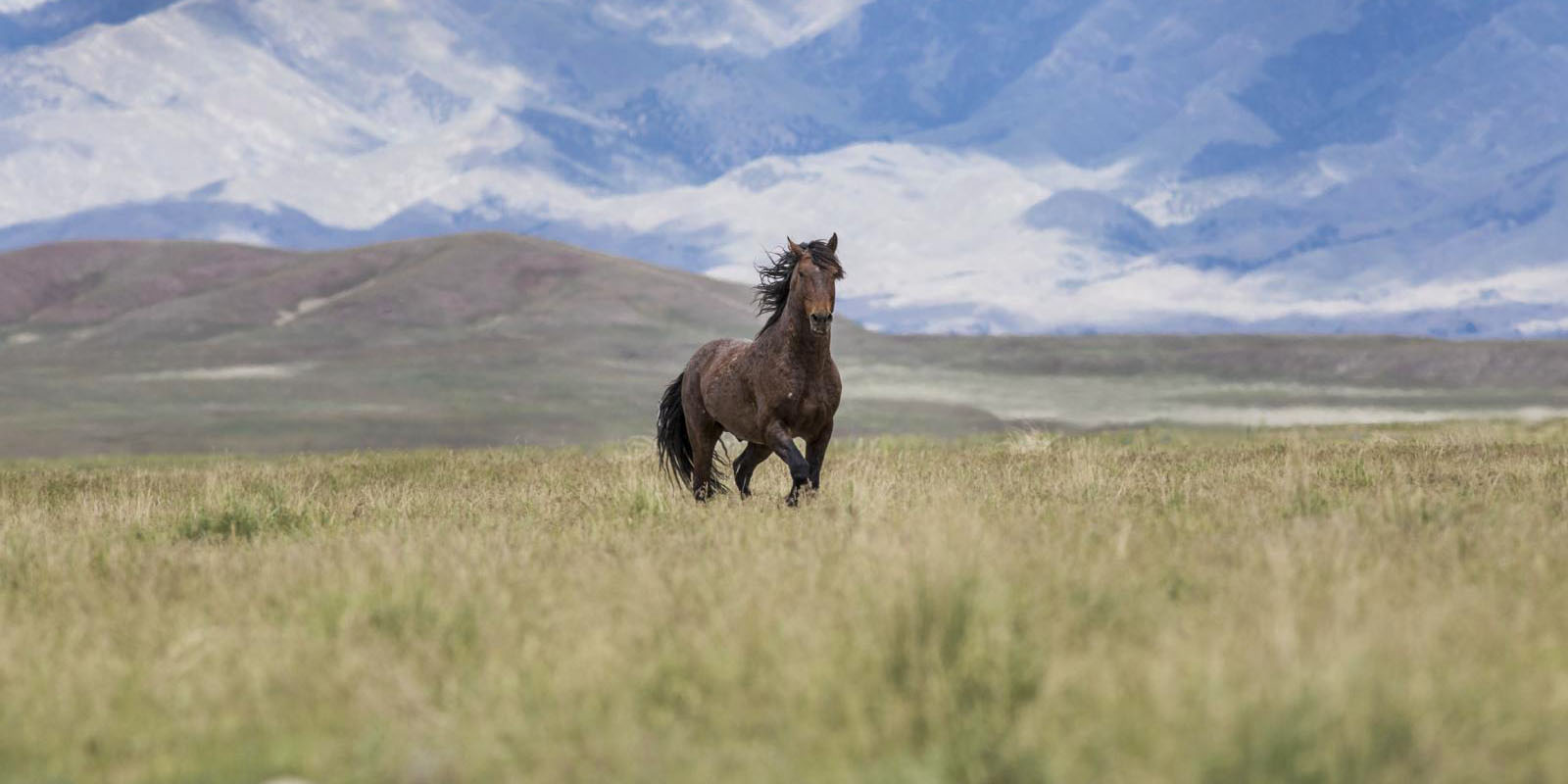Agency Does Not Halt Roundup or Commit to Protecting Horses from Slaughter
Alturas, CA (October 13, 2018). . . In the face of massive public condemnation and international media scrutiny, the US Forest Service announced last night that it would extend by 30 days the period of time during which wild horses captured in the ongoing roundup in the Modoc National Forest will not be sold for slaughter.
However, the Forest Service is not halting the sale of wild horses, as requested by Senator Dianne Feinstein, nor is it committing to protect the horses from being sold for slaughter after January 8, 2019 (90 days after the October10 roundup start date).
“The Forest Service is clearly responding to public pressure, but this time extension is not enough to assuage public concern,” said Suzanne Roy, Executive Director of the American Wild Horse Campaign (AWHC). “It’s unrealistic to assert that safe and humane placement for hundreds of older wild, untamed horses can be secured within 90 days. The Forest Service must immediately halt the roundup and commit to protecting these cherished wild horses from slaughter in recognition of the will of the people, the intent of Congress and California law.”
The Forest Service is in the process of rounding up 1,000 wild horses from the Devils Garden Wild Horse Territory within the Modoc Forest. In the first three days of the roundup, the Forest Service captured and removed 154 horses. (See also Forest Service roundup update page.)
An estimated 300 wild horses over age 10 will be sent to holding corrals in the Modoc Forest, where they will be processed (sorted by sex, vaccinated, wormed, microchipped and stallions will be gelded.) An estimated 700 younger horses will be transported to the Bureau of Land Management's (BLM’s) Litchfield Holding Corrals in Susanville where they will be prepared for adoption.
AWHC has significant concerns about this plan including:
· The plan to sell older horses without limitation on slaughter after 90 days violates state law, the intent of Congress and the will of Californians and all Americans.
· The Forest Service’s misleading claim that the horses could be sold for slaughter other than for human consumption. In reality, the only slaughter market that exists is for human consumption and the only slaughter plants that operate are in Canada and Mexico and they produce horsemeat for human consumption.
· The uncertain fate of any younger horses sent to the BLM holding facility who are not adopted after a year. This week the Forest Service informed a member of AWHC’s team that such horses would also be sold, meaning that hundreds more federally protected wild horses are in danger of being sold for slaughter.
· The failure of the Forest Service to follow the BLM’s Comprehensive Animal Welfare Program standards for helicopter roundups, including the requirement that a veterinarian be present at all times during the capture operation. (The Forest Service is now stating that horses are “malnourished,” an unsubstantiated claim contradicted by photographic evidence.)
AWHC is also taking issue with the Forest Service’s claim that the 300,000-acre Devils Garden Wild Horse Territory can sustain just 400 horses on public lands where thousands of private livestock are authorized to graze. (see below)
AWHC has offered to implement -- at no cost to taxpayers -- a humane fertility control pilot program to lower population growth rates for Devils Garden wild horses. AWHC also offered to facilitate financial compensation to ranchers for retirement or reduced use of grazing permits within Territory to allow for larger wild horse populations.
AWHC again called for a halt to the roundup and urged the Forest Service to come to the table with wild horse protection organizations to develop a humane and sustainable management program for California’s largest and most significant wild horse population. Such a plan should include:
· Achieving population reductions by smaller, incremental removals of wild horses in order to avoid flooding the adoption and rescue market and increase the chances of safe placement.
· Creating a tracking system to account for the whereabouts of all Devils Garden wild horses sold or adopted by the Forest Service. This should include freeze branding horses to allow for visual identification. (Currently they are being microchipped preventing visual identification.)
· Accompanying small removals with a robust fertility control program to reduce population growth rates on the range.
· Reducing subsidized livestock grazing in the territory to allow for a larger wild horse population. (Wild horse protection is mandated under federal law while commercial livestock grazing is a discretionary public land use.)
“The Forest Service is pursuing the same failed mass roundup and removal strategy that the BLM has pursued for four decades,” Roy said. “Not only does it not work, but also, according to the National Academy of Sciences, it makes the problem worse by increasing population growth rates for wild horses who remain on the range.”
“There’s a better way to manage wild horses than treating these natural treasures like trash, using slaughter as a dumping ground for these cherished American icons,” Roy concluded. “We and other organizations remain ready, willing and able to partner with the Forest Service to create a model humane and sustainable management program for the Devils Garden wild horses, California’s largest and most significant wild horse herd.”
For more information, see Frequently Asked Questions.
The American Wild Horse Campaign (AWHC) is a national wild horse advocacy organization whose grassroots mission is endorsed by a coalition of more than 60 horse advocacy, public interest, and conservation organizations. AWHC is dedicated to preserving the American wild horse in viable, free-roaming herds for generations to come, as part of our national heritage.
# # #


